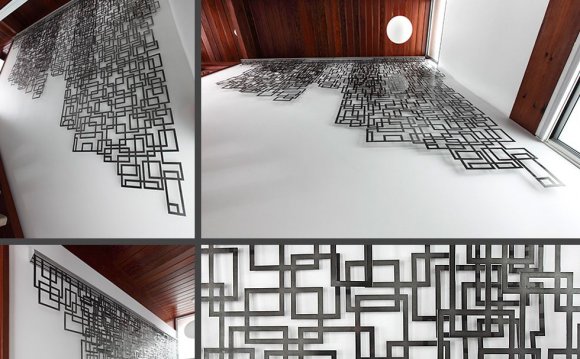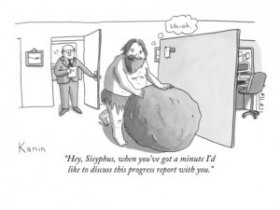
 Just a week ago, I visited a customer to whom I used to be talking to on-and-off for quite some time. Around the meeting room wall, I saw their Enterprise Architecture portfolio, beautiful graphically designed and printed on the giant piece of paper. My host happily explained to me just how much she loved putting that diagram together in '09.
Just a week ago, I visited a customer to whom I used to be talking to on-and-off for quite some time. Around the meeting room wall, I saw their Enterprise Architecture portfolio, beautiful graphically designed and printed on the giant piece of paper. My host happily explained to me just how much she loved putting that diagram together in '09.
I amusingly reminded her from the famous perception of “art for art’s sake” that is a suitable phrase to explain what many designers do when inhabiting frameworks. Indeed, whenever we make reference to Enterprise Architecture, we have to keep in mind that the word ‘architecture’ is, itself, a metaphor.
Inside a tough economy, when levels of competition are progressively global and areas are shifting, this capability to make tough choices will probably be essential. Possibilities in order to save costs will be really valued, and architecture almost always helps companies cut costs. The opportunity to reuse, and therefore quickly seize the following related business chance, can also be likely to be sought after.
The one thing you need to be careful of is when the thing is your marketplaces vanishing, in case your method is outdated, or perhaps your whole market is changing itself, once we have observed in such things as media, you need to be prepared to innovate. Architecture can restrict your innovative gene, by saying, “Wait, wait, wait. You want to decelerate. You want to do things on the platform.” That may be very harmful, if you're really facing troublesome technology or market changes.
Albert Camus authored a famous essay going through the Sisyphus myth known as “The Myth of Sisyphus, ” where he reinterpreted the central theme from the myth. Similarly, we have to challenge the misconceptions of Enterprise Architecture and enterprise system/solution architecture generally – not meekly accept them.
IEEE states, “A key premise of the metaphor is the fact that important choices might be made at the start of system rise in a way like the early decision-making based in the growth and development of civil architecture projects.”
Keep wondering, “When is exactly what we built that’s stable really constraining us an excessive amount of? Just when was it stopping important innovation?” For a lot of designers, that’s likely to be tough, since you begin to love the architecture, the factors, and also the discipline. You like what you’ve produced, but when it's not suitable for the marketplace you’re facing, you need to be prepared to ignore it and go seize the following chance.
The central message is the following: ‘documenting’ architecture in a variety of layers of abstraction for that reasons of ‘completeness’ is plainly absurd. This is also true once the effort to create the items takes such some time as to help make the whole collection obsolete on completion.
RELATED VIDEO











